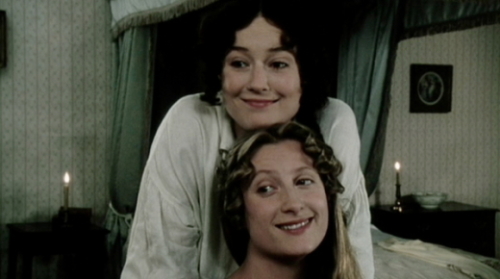Some of the rules from Capellanus’ Art of Courtly Love really surprised me.
At least they did, before I was made aware it had been a satirical reading. For
example the concept that a born-blind man can never love is simply absurd. Love
is not something that relies purely on sight, for it is an emotion that is also
created through interactions, trust, and understanding.
The rules “he who is not jealous
cannot love” and “real jealousy always increases the feeling of love” are ridiculous
to me due to the fact distrust, fear, and being overly possessive (often the
sources of jealousy) can prevent communication and are well known factors of what
can end a relationship. It’s a shame that so many people, for so long, took
these ideas seriously. For ideas like these could do so much harm emotionally, or
worse, if taken as facts.
I interpreted what courtly love was by comparing it to modern fictional love, through a few common elements: through their
goals, target people, social acceptance levels, and women-rights of the time. For example, some of the
goals for the creation of courtly love was to entertain, teach younger men proper
social etiquette, and provide women with a small feeling of power/status during
an age where women were powerless and often looked down upon.
The targets of courtly love were
often portrayed as (upper-class) married women and young men (knights), for the
idea of love within marriage was an odd, if not deplored, notion due to their
current religious beliefs. Courtly love itself encouraged men to desire,
respect, and protect women rather than just sexually pursue/interact with them.
In other words, it shifted some power from the male lover to the female beloved.
Compared to modern fictional love, these
elements vary quite a bit in some areas. While it is similar in the fact some of
the goals are to entertain and set social standards (to a degree), what is
different is the status/rights of the female audience and how they’re
influenced. In terms of the woman-rights of the female audience, woman have
become closer than ever, if not are already, to being on equal standing with
men, and as a result do not focus as much on a need for higher status/power in
modern fictional romances. Instead, they crave more the emotional fulfillment,
the desire, the lust, the passion from stories, which they often cannot find in
real life (similar to what the male position in courtly love offered, but with
more accepted sexual relations).
Modern fictional love has more
equal treatment and expectations between the sexes, unlike courtly love, which
was just beginning to close the gap. The targets for this modern love are
practically anyone and anything, with the general exception of incestuous relations,
because the social acceptance of ‘love’ (both in the church and public) has
increased greatly since the origins of courtly love. Along with greater
acceptance, love within marriages became not only socially okay, but desired and
sought for too. This modern shift in genre transformed the conception of
courtly love, one of purely mental desire and service, to a form of love that needs
both an emotional and physical connection to be content.
I wonder though, was this shift in
fictional ‘love’ types mainly the result of a change in audience over the years?
Or did the created shift in fiction (starting with courtly love) actually
succeed in changing the beliefs/expectations of its audience, over time eventually
snowballing into this current version of modern fictional love?





